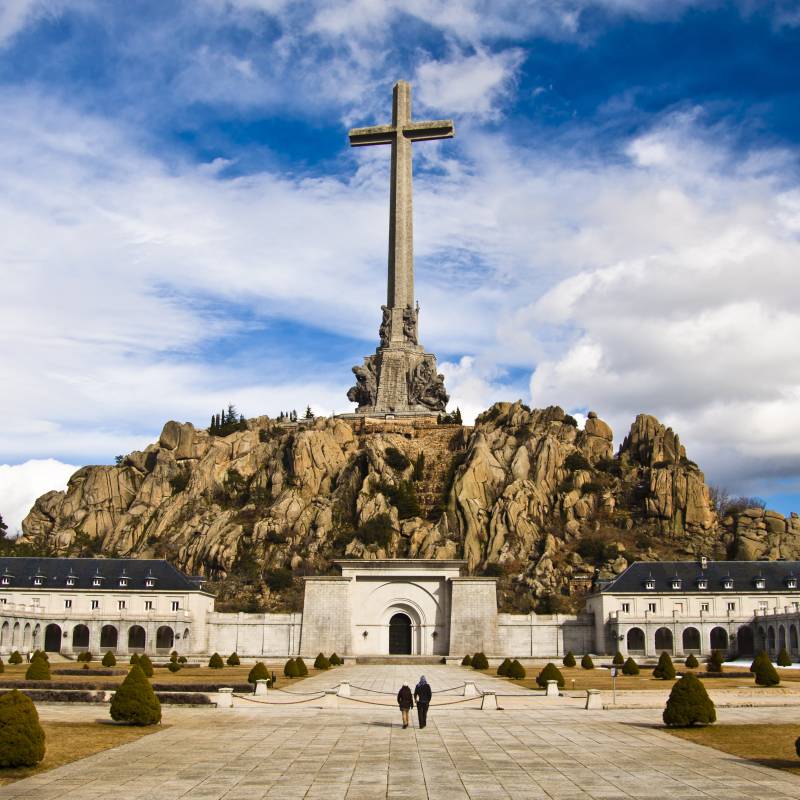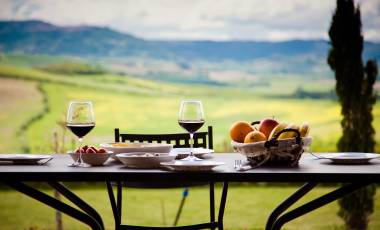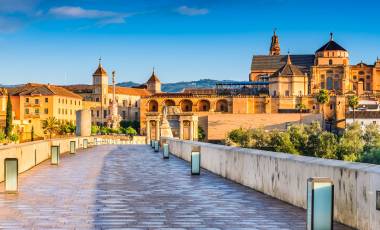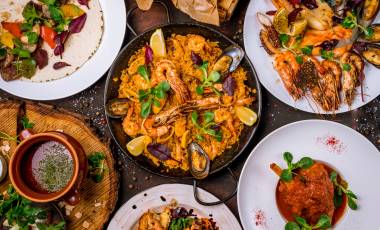
Whether you’re a fan of classical columns and ornate frescoes or more contemporary allures, you’ll be spoilt for choice in Italy. Learn more about Italian art and architecture to plan your cultural vacation.
Spain’s early culture was influenced mainly by the Phoenicians and the Greeks, who settled in the region around 1000 BC. Their biggest contributions to Spain were olives and grapes – both still key elements in Spanish cuisine. Head to ancient Cadiz in Andalucia to see where the former landed their ships or follow in the footsteps of the Greeks on a tour of Catalonia’s coastline.
Until 600 AD, Romans occupied the Iberican Peninsula (the collective name for Spain and Portugal) – you can still spot Roman ruins in cities like Seville and Cordoba. Romans additionally brought religion to Spain and developed several Latin-based dialects, which form the basis of languages spoken throughout the Hispanic world today.
Spain has been no stranger to invasions over the centuries. In 711 AD, an army of Moors (known as the Al-Andalus) from Damascus gained control of the Iberian Peninsula. Cordoba in Andalusia, one of Spain’s major Muslim settlements, is packed with fascinating Moorish relics, including the magnificent Mesquita (Grand Mosque). Seville and Granada also have links to Spain’s Moorish past. Granada is where you’ll find the world-famous Alhambra; a fortress revered for its ornate interiors and beautiful gardens.

Known as the La Reconquista, this period saw Christians regain control in Spain over several centuries, beginning in 722 AD.
Santiago de Compostela in Galicia flourished around a cult dedicated to St. James – who is supposedly buried in the Cathedral – and remains one of the most important Christian pilgrimage sites in Europe.
After the defeat of Granada – the last Islamic stronghold – in 1492, Catholicism spread rapidly throughout Spain, led by the country’s new rulers, Queen Isabella I of Castile and King Ferdinand II of Aragon. They even birthed the Spanish Inquisition to convert non-believers. Alhambra is a prime spot to immerse yourself in 15th century Spanish history as it’s where the Royal Court was established.

Between the 15th and 19th centuries, Spain was extremely successful in colonizing new territories. Expeditions by Christopher Columbus led to Spain’s discovery of the Americas.
Cadiz in Andalusia was one of the main ports from which explorations to the New World departed. Uncover more about this period of discovery at the Torre Tavira, an 18th century watchtower (one of the hundreds along Cadiz’s coastline), which has been turned into a museum.
As the headquarters of a major trading company, San Sebastien on the Bay of Biscay also played an important role. While the original city was burnt to the ground in the 1800s, you can still stroll around the Old Town and learn about its heritage at the San Telmo Museum.
The 17th and 18th centuries not only saw Spain conquer new territories but also flourish in the arts. The country’s Golden Age didn’t last however, with the following centuries punctuated by inequality, famine, and invasions from neighboring France. The early 1800s marked Spain’s resistance to Napoleon’s occupation and the French were driven out with help from the British and Portuguese in 1813. Spain became divided into conservatives, who supported the church and the monarchy, and liberals, who sought reform and democracy.

The remainder of the 19th century was littered with conflicts, the loss of colonies (including Cuba and Puerto Rico) and financial decline. It did, however, bring about a new form of art – Catalan Modernism. You can see prominent works from this era around Spain, including the Gothic Sagrada Familia of Barcelona by Antoni Gaudi.
Spain was thrown into two years of civil war following the victory of the left-wing Popular Front in the election of 1936. The Spanish Civil War is mainly remembered for Pablo Picasso’s painting of the bombing of Guernica (currently hanging in the Reina Sofia Museum in Madrid) and the involvement of the International Brigades made up of Communist volunteers – most famously Ernest Hemmingway.
The Nationalists eventually beat the Popular Front supporters and General Francisco Franco became Spain’s dictator. Franco’s rule lasted over 50 years and, while history’s opinion of him is mixed, he did keep Spain out of WWII.

The 1960s saw tourism take off in Spain, especially along the Costa del Sol in Andalusia and Costa Brava in Catalonia, which boosted the economy. The British in particular flocked to Spain for sunshine, sea, and culture.
In 1975, Prince Juan Carlos I became Spain’s ruler. He appointed Adolfo Suárez as Prime Minister, who reformed the constitution and abolished many of Franco’s more extreme policies, effectively turning Spain into a democracy.
Today, Spain is a stable country with a booming tourism industry and plenty of modern and historic attractions to admire.
To immerse yourself further in the history of Spain, book an exciting tour around the country’s culture-packed cities with Enchanting Travels.


Whether you’re a fan of classical columns and ornate frescoes or more contemporary allures, you’ll be spoilt for choice in Italy. Learn more about Italian art and architecture to plan your cultural vacation.

Embark on a culinary sojourn that will most certainly tantalize your tastebuds! Our curated list of destinations will provide a truly mouthwatering vacation.

From geothermal spas to celebrated wine and food regions, take a true break from the everyday at these leisurely destinations in Europe.
Sorry, your search found no results.

Delve into the history and culture of Portugal and Spain as you journey through quaint towns and vibrant cities on this customizable getaway. Start your vacation in Porto, a laidback Portuguese coastal city, before moving on to soak up the beauty of Lisbon and relax on the beaches of the Algarve region. While in Spain,…

Marvel at the historical and cultural treasures of the Iberian Peninsula on this combined tour of Portugal and Spain. Begin your journey with a guided tour of Lisbon’s most well-known landmarks. Immerse yourself in the soulful sounds of the Fado as you enjoy some authentic Portuguese delicacies. At your next stop – Lagos, in the…

Discover Spain’s three major highlights on this classic tour! Beginning in the capital city of Madrid, take in an eclectic blend of tradition and modernity as you explore the city on a guided tour and visit its world-famous museums. Armed with a local expert in Seville, follow in the footsteps of the Moors at magnificent…

Discover the highlights of Spain on this private tour. Beginning in cosmopolitan Barcelona, delve deep into Catalan art and culture with a personalized visit to landmarks by Antoni Gaudi such as La Sagrada Familia and Parc Guell. Discover everyday life in Barcelona as you visit a bustling local market. Next in the Andalucian beauty, Seville,…

Take an epic journey through the diverse landscapes and vibrant cities of Spain with this private tour. Discover the most popular tourist destinations in the country on personalized, guided tours – from Antoni Gaudi’s best works in Barcelona to Moorish palaces and gardens in Andalusia and the stunning Guggenheim in Bilbao. Discover the countryside on…

Delve into the unique charms of Andalusia – from its clifftop cities in the Sierra Nevada to its gastronomy, flamencos and fiestas! Begin your tour in Madrid, sampling the culinary gems of the city as you hop across popular eateries with a local food expert. In the Andalusian city of Seville, take a personalized walk…
Sorry, your search found no results.

From the golden coastlines of Andalusia to the colorful architecture of beautiful Barcelona, discover the diversity and vibrancy of Spain firsthand on a tour tailored to your interests.
If you’re planning a trip to this beautiful country, you’ll be spoiled for choice with its many restaurants, cafes, and markets serving up all sorts of sizzling and seasonal delights. Eat your way through Spain with our tips!
A whole lot of sunshine, beautiful beaches, stunning architecture, delectable cuisine and some of the world’s most popular religious and cultural festivals – time your Spain vacation right with tips on when to visit.